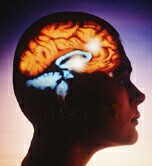
THURSDAY, Feb. 11 (HealthDay News) — A link appears to exist between attention-deficit hyperactivity disorder (ADHD) and anomalies in the brain’s reward system, a new study suggests.
Spanish researchers used MRI to scan the brains of 42 children with ADHD and 42 other children with no signs of ADHD and found that the ventral striatum was smaller, particularly on the right side, in those with ADHD. The ventral striatum includes the nucleus accumbens, which maintains levels of motivation when a person starts a task and continues to maintain motivation until the task is completed.
The reduced size of the ventral striatum in children with ADHD was associated with symptoms of hyperactivity and impulsiveness, the researchers said.
The study was published recently in the journal Biological Psychiatry.
These findings support results from previous studies in animals in which researchers identified an association between the nucleus accumbens, impulsive behavior and hyperactivity.
The researchers said it appears that ADHD is not only caused by brain alterations that affect cognitive processes, but also by brain irregularities that cause problems with motivation.
More information
The U.S. National Institute of Mental Health has more about ADHD.

